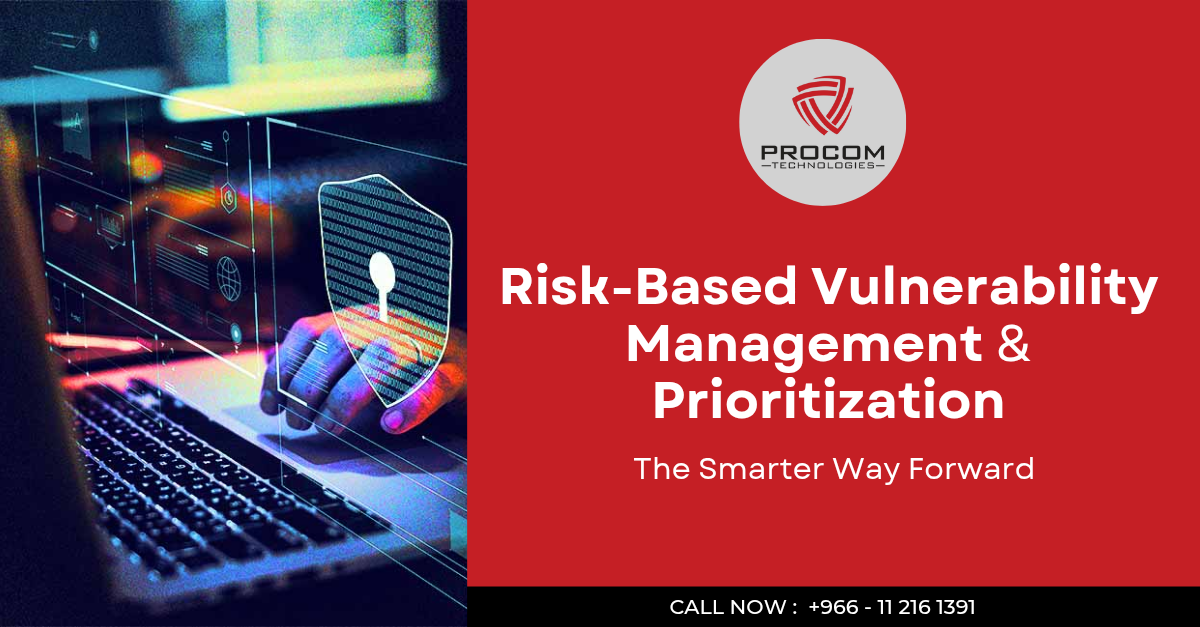Risk-Based Vulnerability Management & Prioritization: The Smarter Way Forward
The Growing Challenge of Vulnerabilities
Cyber threats are accelerating at an alarming pace. Over the past five years, software vulnerabilities have surged by more than 50%, while nearly 75% of organizations admit they remain vulnerable to cyberattacks due to unpatched systems.
The message is clear: traditional vulnerability management approaches are no longer enough. Security teams are overwhelmed with endless vulnerability reports, spending valuable time patching low-risk flaws while high-risk threats remain exposed.
This is where Risk-Based Vulnerability Management (RBVM) becomes the smarter, more effective approach.
Why Traditional Vulnerability Management Falls Short
Most organizations have long relied on CVSS severity scores to determine patching priorities — Critical > High > Medium > Low.
But here’s the problem: severity does not equal risk.
- A “critical” flaw in a low-value internal server may have little impact.
- A “medium” vulnerability on a payment system could be catastrophic if exploited.
Other limitations of traditional approaches:
- Thousands of vulnerabilities tracked in spreadsheets or static reports.
- Slow collaboration between IT, DevOps, and Security teams.
- Lack of real-world exploit context.
- Growing patch backlogs that never get fully resolved.
The result? Security teams stay reactive, while attackers exploit the gaps.
The Risk-Based Vulnerability Management (RBVM) Approach
Risk-Based Vulnerability Management (RBVM) goes beyond severity scores and looks at contextual risk to your business.
Instead of patching blindly, RBVM prioritizes vulnerabilities by answering:
- Asset Exposure: Is the system public-facing or internal?
- Business sensitivity: Does it store critical data or run core operations?
- Exploit availability: Is there an active exploit in the wild?
- Exploit Complexity: How easy is it for attackers to use?
This smarter model ensures teams focus on fixing vulnerabilities that truly threaten the business.
Why RBVM Matters Now
The cybersecurity landscape is evolving faster than ever:
- 90% of successful cyberattacks exploit known but unpatched vulnerabilities.
- The attack surface is expanding across cloud, APIs, and containers.
- Security teams are already stretched thin — efficiency is no longer optional.
Benefits of adopting RBVM:
- Faster remediation of high-risk vulnerabilities
- Reduced attack surface and minimized exposure time
- Stronger alignment between security priorities and business needs
- Security teams gain more time to focus on strategic initiatives
Building a Smarter Security Posture with RBVM
The path forward is clear:
- Map your assets – Identify critical systems and sensitive data
- Adopt risk-based tools – Automate prioritization with real-time threat intelligence.
- Streamline patching – Fix what truly matters, not just what scores highest.
- Monitor continuously – Security is an ongoing process, not a one-time project
With RBVM, organizations shift from reactive patching to proactive protection, reducing the risk of costly breaches and ensuring resources are invested where they deliver the highest impact.
How Procom Technologies Can Help
At Procom Technologies, we specialize in helping organizations implement Risk-Based Vulnerability Management strategies that deliver real results. Our experts combine advanced threat intelligence, automation, and business-aligned prioritization to ensure you remediate the vulnerabilities that pose the greatest risk.
Whether you’re struggling with overwhelming patch backlogs, lack of visibility, or the need for smarter security posture management, Procom provides tailored solutions to help you:
- Identify critical assets and exposure points
- Automate risk-based prioritization
- Streamline patch management across hybrid environments
- Continuously monitor threats to stay ahead of attackers
With Procom Technologies, your organization can strengthen its defenses, improve efficiency, and build long-term cyber resilience.
Final Thoughts
The rise in vulnerabilities will only continue, but your security teams don’t have to be overwhelmed. Risk-Based Vulnerability Management & Prioritization is the future of effective cyber defense, empowering businesses to:
- Focus on vulnerabilities that truly matter
- Build resilience against evolving threats
- Strengthen trust with customers and stakeholders
👉 It’s time to move from “patch everything” to “patch what matters.”

